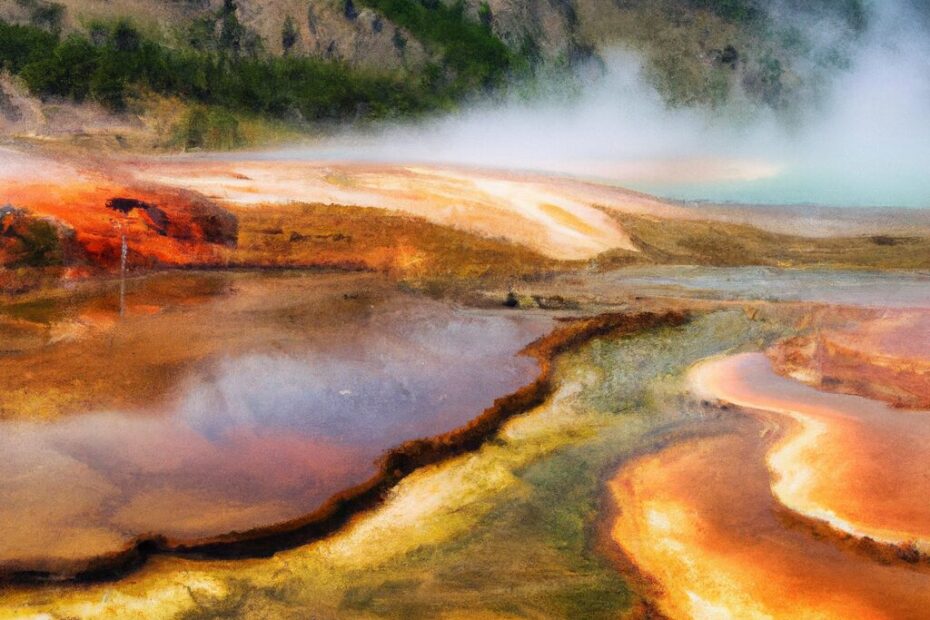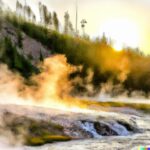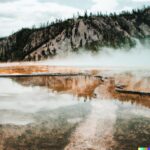Yellowstone National Park is home to some of the most unique and awe-inspiring geysers in the world. The geothermal activity in Yellowstone, fueled by the Yellowstone Caldera, creates a diverse and vibrant ecosystem that must be protected. Conservation efforts are in place to monitor, regulate visitor activities, and maintain these geothermal features.
Challenges such as human impact, pollution, and invasive species threaten these natural wonders. Future plans involve collaboration with Indigenous communities, sustainable practices, and continued research to ensure the preservation of Yellowstone’s geysers for generations to come.
What Makes Yellowstone Geysers Unique?
Yellowstone Geysers stand out as unique natural wonders, renowned for their spectacular geothermal features and diverse ecosystems.
These geysers, such as Old Faithful and Steamboat, showcase the raw power of the Earth’s geothermal energy, erupting with scalding hot water and steam in mesmerizing displays.
What makes Yellowstone even more remarkable is the intertwining of these geysers with thriving ecosystems, where unique plant species flourish in the acidic waters around the geysers, creating a delicate balance between extreme heat and life.
The role of Yellowstone Geysers in preserving geothermal features is crucial, serving as living examples of the planet’s incredible geological processes.
The Geothermal Activity in Yellowstone
The geothermal activity in Yellowstone fuels the mesmerizing displays of geysers, hot springs, and geothermal pools that define the park’s landscape.
This unique phenomenon is the result of the park sitting atop a supervolcano that boasts incredible heat beneath the Earth’s surface. As water seeps deep into the ground, it is heated by the molten rock below, creating a pressurized chamber of boiling water and steam. When this pressure is released, it erupts through vents in the earth, forming the iconic geysers that shoot water high into the sky. The hot springs, with their vibrant colors, are formed when groundwater is heated and rises to the surface, carrying minerals that paint the landscape in stunning hues.
The Role of the Yellowstone Caldera
The Yellowstone Caldera plays a pivotal role in shaping the geysers and unique geological formations found within the park, showcasing the power and grandeur of natural processes.
This massive volcanic feature is a driving force behind Yellowstone’s geothermal wonders, with its underground magma reservoir fueling the park’s hot springs, bubbling mud pots, and iconic geysers like Old Faithful. The geological impact of the caldera, formed by a cataclysmic eruption thousands of years ago, continues to influence the landscape and hydrothermal activity of the region to this day. Visitors to Yellowstone are treated with a front-row seat to witness the raw power of the Earth’s inner workings, all thanks to the Yellowstone Caldera’s enduring legacy.
The Importance of Protecting Yellowstone Geysers and their Surrounding Habitats
Preserving Yellowstone Geysers and their surrounding habitats is crucial for maintaining the delicate ecological balance and safeguarding the park’s biodiversity.
Conservation efforts play a vital role in ensuring that these unique geothermal features remain undisturbed for future generations to enjoy. By implementing sustainable practices and promoting environmental stewardship, we can protect not only the geysers themselves but also the diverse array of plant and animal species that call Yellowstone home. The interconnected web of life within the park relies on the healthy functioning of its ecosystems, making conservation a top priority in preserving the natural beauty and wonder of this iconic location.
Conservation Efforts in Place for Yellowstone Geysers
Various conservation projects and initiatives are actively preserving Yellowstone Geysers, focusing on geothermal conservation, habitat restoration, and sustainable park management.
Geothermal conservation plays a crucial role in protecting the delicate ecosystem of the geysers by monitoring and regulating the geothermal activity to maintain equilibrium. Habitat restoration projects within the park aim to rehabilitate key areas affected by human impact, such as replanting native vegetation and restoring wildlife habitats. Sustainable practices like waste reduction and energy efficiency measures are also being implemented to minimize the park’s environmental footprint and ensure the long-term preservation of Yellowstone’s natural wonders.
Monitoring and Research
Continuous monitoring and research play a vital role in understanding the impact of conservation efforts on wildlife, habitats, and the overall ecosystem in Yellowstone.
Through these monitoring programs and research initiatives, scientists can gather crucial data that allows them to evaluate the effectiveness of conservation measures implemented in the region. By closely examining trends in species populations, habitat health, and ecosystem dynamics, researchers can identify areas of success and pinpoint where improvements are needed to ensure the long-term sustainability of wildlife and ecosystems.
This insightful information serves as a roadmap for refining conservation strategies, promoting biodiversity, and fostering sustainable practices within Yellowstone and other conservation areas.
Regulating Visitor Activities
Regulating visitor activities is essential for minimizing the environmental impact on Yellowstone Geysers, ensuring responsible tourism practices and park sustainability.
Considering the delicate balance of the ecosystem in Yellowstone National Park, managing visitor activities plays a crucial role in protecting not only the geysers but also the plant and animal species that call the park home. By implementing park management strategies that emphasize environmental stewardship, like designated trails, educational programs, and waste management initiatives, the park authorities can ensure that visitors have a positive impact on the environment. Such measures not only preserve the natural beauty of the park but also contribute to the long-term sustainability of this iconic destination.
Restoration and Maintenance of Geothermal Features
The restoration and maintenance of geothermal features in Yellowstone are vital for preserving the natural beauty and ecological diversity of the park’s geysers.
Efforts focused on restoring and sustaining these geothermal wonders involve a combination of ecological preservation strategies and conservation programs. By implementing sustainable development practices, such as responsible visitor management and monitoring systems, the park aims to strike a balance between tourism and environmental protection. Conservation initiatives also play a crucial role in safeguarding the fragile ecosystems surrounding the geysers, ensuring that future generations can continue to experience the unique wonders of Yellowstone National Park.
Challenges Faced in Protecting Yellowstone Geysers
Despite conservation efforts, protecting Yellowstone Geysers poses significant challenges, including human impact, pollution, and threats to fragile ecosystems.
Preserving the geysers in Yellowstone requires a multi-faceted approach that addresses various issues. The sheer volume of visitors to the park raises concerns about the wear and tear on these natural wonders. Implementing sustainable tourism practices and educating visitors on responsible behavior can help reduce the impact.
Pollution from surrounding areas can seep into the delicate geothermal features, affecting water quality and the biodiversity of the region. To combat this, stringent pollution control measures and regular monitoring are essential to safeguard the geysers and their surroundings.
Human Impact and Pollution
Human activities and pollution present considerable threats to the environmental sustainability of Yellowstone Geysers, necessitating urgent conservation measures to mitigate their impact.
The delicate balance of Yellowstone’s geothermal features, including the iconic geysers, is being disrupted by pollutants seeping into the ecosystem. The introduction of chemicals and waste from human activities poses a danger to the unique biodiversity that thrives in these thermal areas. Increased water pollution from runoff and improper waste disposal can alter the fragile ecosystem, affecting the wildlife and plant life that depend on the geysers for sustenance.
Conservation efforts must focus on reducing human impact through sustainable tourism practices, strict waste management policies, and education on the importance of preserving this natural wonder for future generations.
Invasive Species
The introduction of invasive species poses a significant risk to wildlife preservation and ecological balance in Yellowstone Geysers, requiring proactive management strategies to safeguard native flora and fauna.
These intrusions often disrupt the delicate interplay between plants and animals, leading to potential extinction threats for indigenous species. By outcompeting native wildlife for resources and altering the natural habitat, invasive species can cause a ripple effect that reverberates throughout the entire ecosystem.
In response, effective habitat management practices, such as controlled burns and targeted removal of invasive species, play a crucial role in restoring ecological balance and protecting the biodiversity of Yellowstone’s diverse landscape.
Future Plans for Conservation and Preservation of Yellowstone Geysers
Future conservation efforts for Yellowstone Geysers involve collaborations with indigenous communities, sustainable practices, and continued research to ensure the long-term preservation of the park’s unique ecosystem.
These strategic initiatives are focused on fostering partnerships with local tribes to integrate traditional ecological knowledge into conservation plans, implementing eco-friendly initiatives to reduce the park’s carbon footprint, and conducting ongoing studies to monitor the impact of climate change on the geothermal features. By prioritizing sustainable development practices and engaging in robust scientific research, the park aims to protect its biodiversity for future generations while promoting responsible tourism that respects the natural environment.
Collaboration with Indigenous Communities
Collaborating with indigenous communities is integral to fostering stewardship and cultural preservation within Yellowstone, aligning conservation efforts with traditional knowledge and values.
By partnering with indigenous communities, conservation projects in national parks can benefit immensely from the rich history and ecological wisdom passed down through generations. This collaboration brings a deeper understanding of the land and its resources, ensuring that preservation efforts are not only effective but also respectful of the cultural significance attached to these landscapes. The inclusion of traditional ecological knowledge helps in developing sustainable conservation strategies that have a holistic approach, considering not just the immediate environment but also the long-term well-being of the ecosystem.
Implementation of Sustainable Practices
The implementation of sustainable practices is essential for promoting environmental sustainability and minimizing the ecological footprint in Yellowstone, ensuring the park’s long-term conservation.
By integrating environmentally friendly strategies in park management, Yellowstone can serve as a model for other natural habitats facing similar challenges. Embracing sustainable development principles will not only safeguard the park’s biodiversity but also create a harmonious balance between conservation efforts and visitor experiences. Through the adoption of conservation strategies focused on preserving natural resources and habitats, Yellowstone can continue to thrive as a protected wilderness area, showcasing the benefits of prioritizing environmental stewardship in park management.
Continued Research and Monitoring
Continued research and monitoring efforts are critical for assessing the effectiveness of conservation projects, guiding adaptive management strategies, and ensuring the ecological preservation of Yellowstone Geysers.
This ongoing research and monitoring play a vital role in evaluating conservation outcomes, providing valuable insights into the impact of human activities on the delicate ecosystem of Yellowstone. By monitoring wildlife populations, habitat conditions, and ecological processes, experts can make informed decisions to support habitat restoration efforts and bolster wildlife conservation initiatives in the park. The data collected through these efforts help conservationists identify areas that require immediate attention and prioritize actions to safeguard the biodiversity and natural beauty of Yellowstone.
Last Updated on February 7, 2024 by Jon Waraas – Originally Posted: February 7, 2024

I’m Jon Waraas, and I’ve been navigating the online world since 2006. By day, I’m the proud owner of some eCommerce gems, and by night, I’m the voice behind the adventures on Waraas.Com.
My heart, however, belongs to the wild beauty of Yellowstone National Park. I’ve got a collection of websites dedicated to sharing the wonders of this natural masterpiece. Oh, and did I mention? I’m currently building my own cabin inside the ghost town of Gilmore, Idaho – a cabin with tales to tell!
When I’m not immersed in the digital realm, you’ll find me lacing up my boots for a good hike or setting up camp under the star-studded sky.




